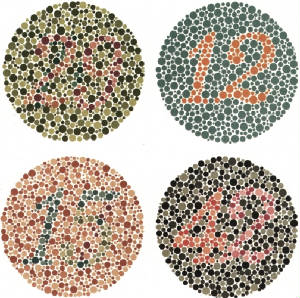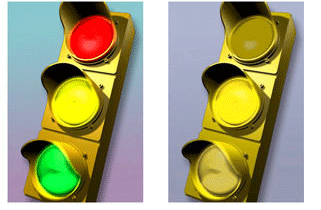|
Humans have three cones on their retina. These cone
cells are major components of seeing colors. Each cone determines a different color; one for reds, one for greens, and
one blues. If one of these cones is missing or has a defect, color blindness will occur.
There are many different types of color blindness.
There are three main types of color blindness:
- Deuteranopic- which is when you are unable to see reds and greens.
- Protanopic- which is also when you are unable to see reds and greens.
- Tritanopic- which is when you are uable to see blues and greens.
As of right now, color blindness has no treatment or cure and
because you were born with it, you can not prevent it. There are, however, certain types of lenses to help people see
better. Below is a common test to tell if
someone is colorblind. If you are not able to see the number inside of the circle, then that states that you are color
blind.

Many people think that being color blind means olny seeing black
and white and this is not true. Most people only have trouble distinguishing the right color. The picture below
is an example of how color blind people see a stop signal.
Some Symptoms are:
- Having trouble distinguishing greens and reds
- Having trouble distinguishing blues and violets
- Being able to see only black and white (which is very rare but severe)

|